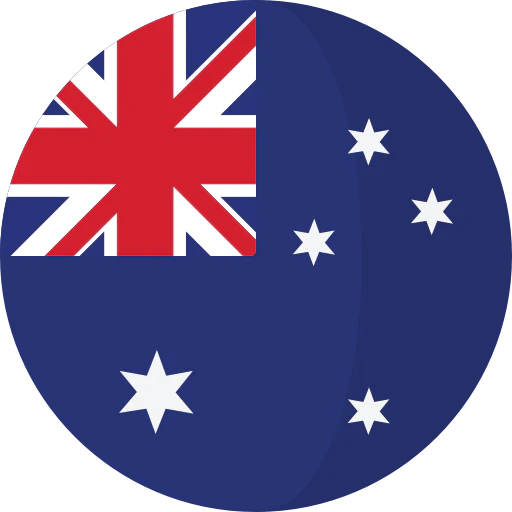 AUD
AUD

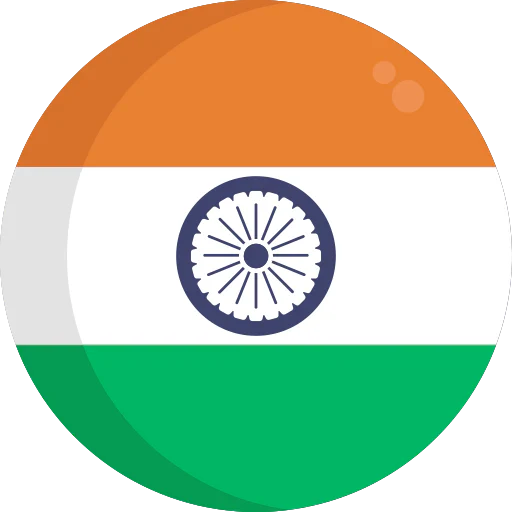
India
211, LOTUS BUSINESS PARK, Ram Baug Road, Near Chincholi Naka, S.V. ROAD, Malad (West), Mumbai, MUMBAI SUBURBAN, MAHARASHTRA, 400064
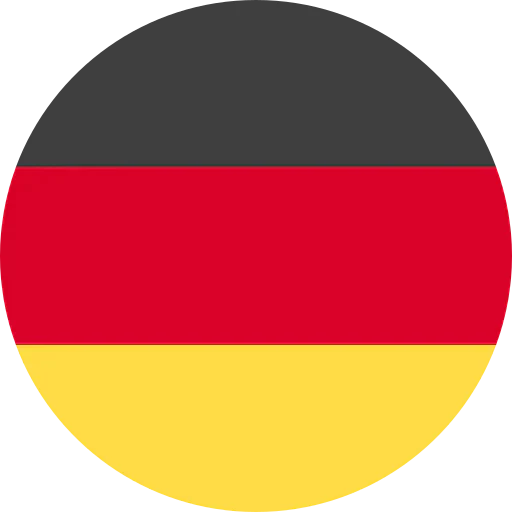
Germany
Coming Soon.
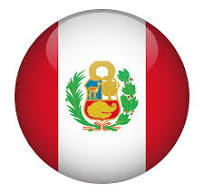
Peru
Coming Soon.
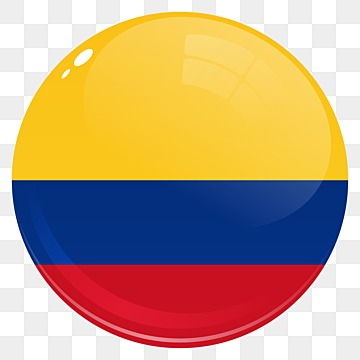
Colombia
Coming Soon.
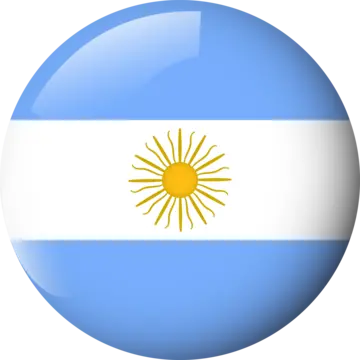
Argentina
Coming Soon.
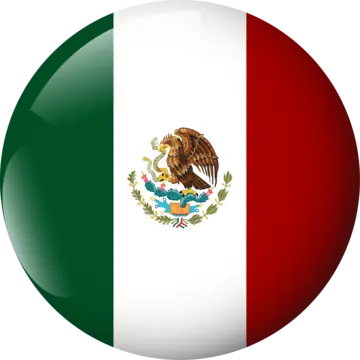
Mexico
Coming Soon.
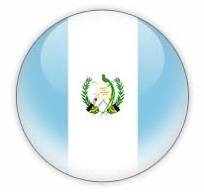
Guatemala
Coming Soon.
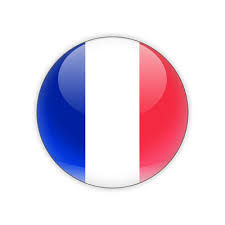
France
Coming Soon.
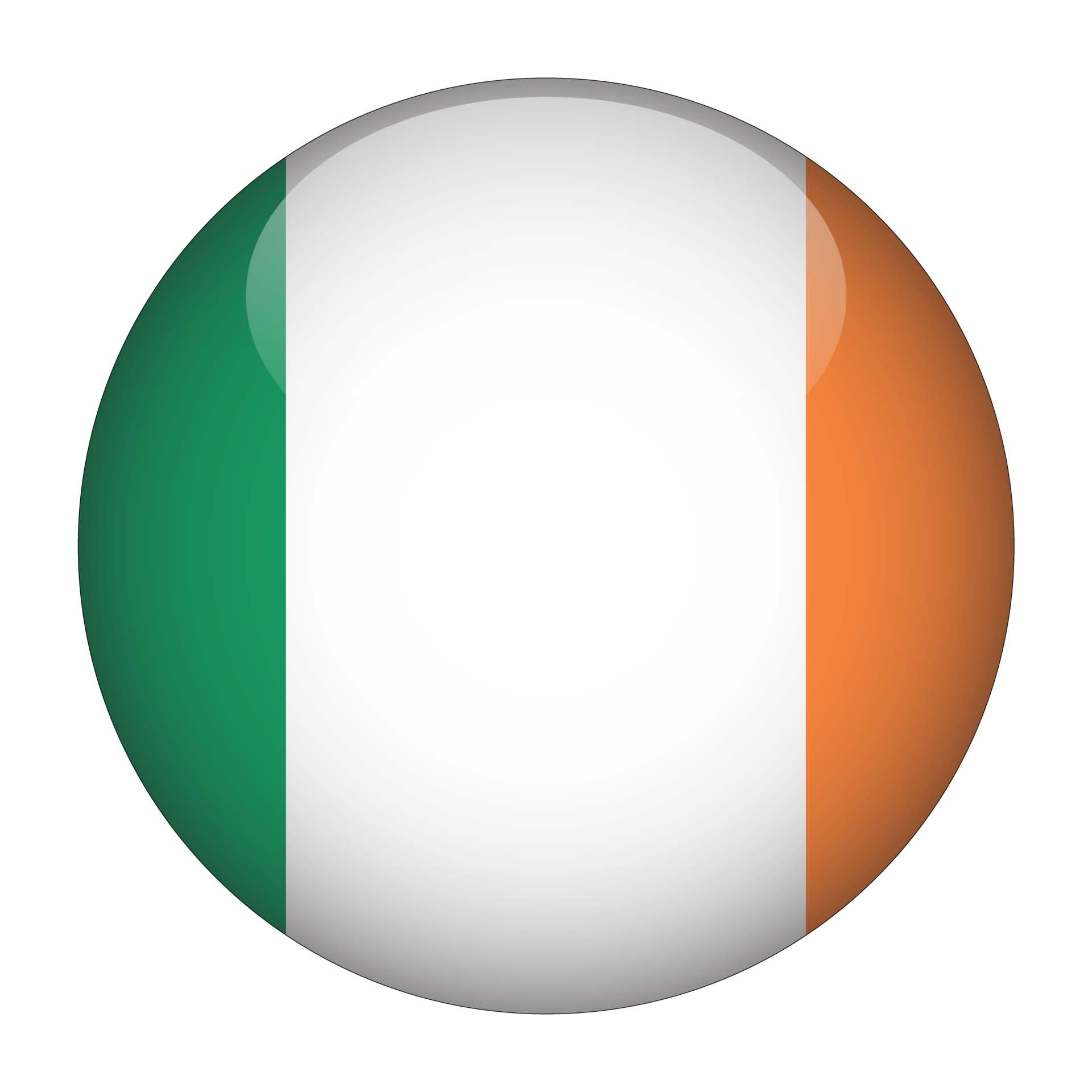
Ireland
Coming Soon.
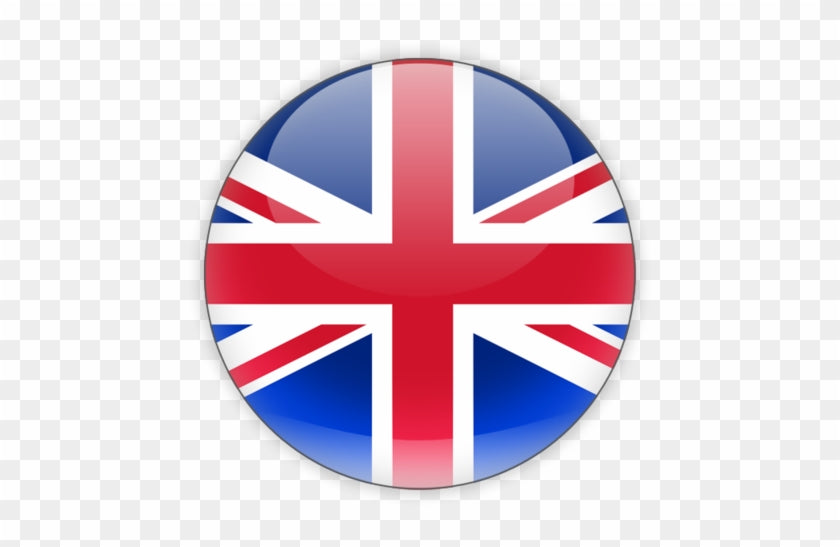
UK
Coming Soon.
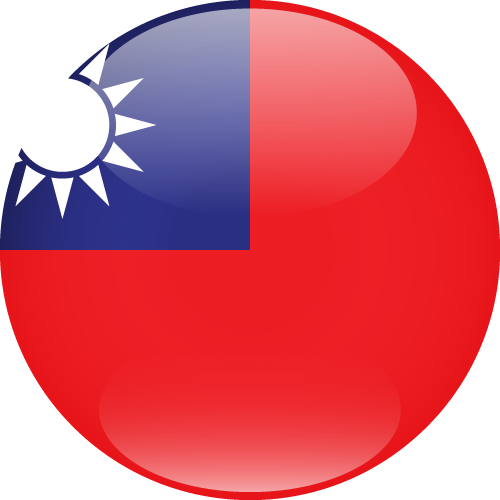
Taiwan
Coming Soon.
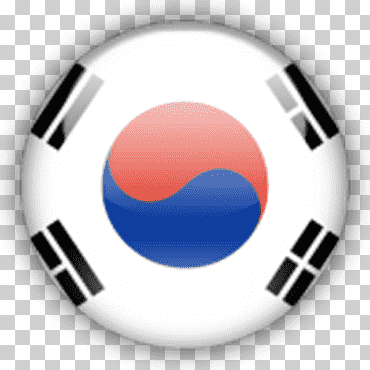
S. Korea
Coming Soon.
TERRA is rapidly expanding its reach worldwide, committed to providing the best personal products made from natural and sustainable ingredients. Our biodegradable baby wipes have been a popular choice among eco-conscious consumers who prioritize quality and sustainability. With a strong global presence, TERRA is a trusted brand that delivers high-quality and natural personal care products to individuals and families everywhere.
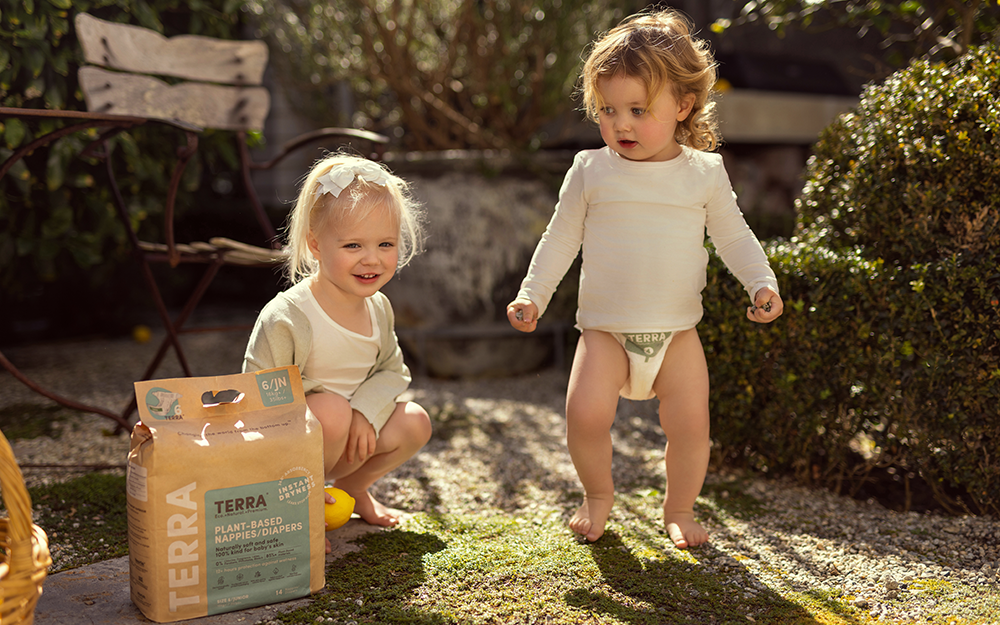
For assistance from the TERRA team, please contact us by phone at
to email
support@terragentle.com.auWe’re here to help and are committed to providing exceptional customer service.
Terra’s mission is to use the best ingredients Mother Nature has to offer, combined with cutting edge manufacturing technology and human innovation to create the best performing and most sustainable baby products. Even though our nappies are 85% plant-based, they don’t sacrifice functionality or performance! Check out this video: https://terragentle.com.au/pages/transparency. Honestly, the video speaks for itself! Terra Nappies absorb more liquid and dry faster than any other nappies on the market, and they happen to be made with better, more natural ingredients too!
Terra Nappies are made with 85% plant-based materials, and our mission is to reach 100% plant-based in the future as new materials become available. The performance of our nappies is our guiding star, and we are not willing to sacrifice performance by using materials that don’t meet our requirements of superior absorption, instant dryness and preventing leaks. Unfortunately, it’s not currently possible to create a nappies that does all those things, without using some non-plant-based materials. Even if a nappies is made with more plant-based materials, if it doesn’t perform well, it has no value, so we are continuing our mission until we find plant-based materials that will work as well, or better than our current materials…stay tuned! Ingredients: Topsheet: We use an incredibly soft proprietary polypropylene, as it performs better and wicks away moisture faster than any other material currently available. The combination of our moisture wicking Topsheet and our 360 super Absorbent Core results in a completely dry Topsheet against the baby’s skin in less than a minute. This means no sitting in a wet diaper, which causes diaper rash to develop. While we just launched in the US in 2023, Terra has been sold in New Zealand for 4 years and there has never been a single complaint about diaper rash from Terra Diapers. Our Topsheet material is similar in functionality to the material used in modern athletic wear like the popular “momiform” leggings. Cotton is a wonderful material as long as it’s dry, but there is a reason athleisure wear is no longer made of cotton… it takes forever to dry! Plant-Based Absorbent Core: The fluffy core that helps absorb liquid is made from wood pulp sourced from the US. The wood pulp is made from FSC Certified sustainably grown and harvested forests. High-quality Japanese SAP (super absorbent polymers) is added to the pulp and wrapped in tissue paper. Super Absorbent Polymers (SAP): The most important ingredient in any diaper is the Super Absorbent Polymers (SAP), as that is what absorbs the majority of the liquid. SAP comes in many different quality grades, which means there is a dramatic difference in cost resulting in most diaper manufacturers using less, lower quality SAP. Terra only uses the most premium quality Japanese SAP that can quickly absorb up to 20 times its weight, which helps our diapers absorb liquid faster and perform better than any other diapers we have found! Therefore, it’s fair to say that the SAP truly is the “secret sauce” for diaper performance, and it confirms the old saying that “you get what you pay for”! Plant-Based Waterproof Breathable Barrier: This layer is made from 100% plant-based PLA, which is a thin film derived from non-GMO corn starch. This layer has micro-pores that are small enough to stop liquid molecules from passing through to prevent leaks, but big enough to let air through, which helps reduce the heat and moisture inside the diaper to keep babies dry. You may feel slight heat and moisture on the outside of the diaper soon after your baby urinates. This is not urine leaking, the heat you feel is from the urine being absorbed into the diaper. The moisture on the outside of the diaper is water vapor coming through the micro-pores, which helps reduce the moisture on the inside of the diaper. It's similar to a humid day, where it feels kind of wet outside, but it's not actually wet, just moist air. Plant-Based Backsheet: The Breathable Backsheet, or the soft outer cover, is made from 100% Bamboo Fibre, NOT Bamboo from Viscose. Many diapers use Bamboo Viscose, which goes through a harsh chemical process during manufacturing. Our 100% Bamboo Fibre is manufactured through a mechanical process where no chemical treatment is necessary. See FAQ below in the Wipes section about the difference between Bamboo and Bamboo Viscose. Plant-Based Leg Cuffs: Our double leg cuffs are not only stretchy for a comfortable snug fit around baby’s legs, they are also super soft. The stretchiness comes from plant-based natural rubber and the moisture barrier is made from bamboo fibre and polypropylene. Plant-Based Wetness Indicator: Our wetness indicator is made from natural wax that changes color when exposed to moisture. Frontal Tape Fastening System: (Only found on Diapers, not Training Pants) For a secure and comfortable fit that allows the baby to move around, we use a hook and tab fastening system that is made of polypropylene. The tabs are securely attached to the diaper to avoid any pulled tabs and destroyed diapers, and they can be fastened and unfastened as needed. Food Grade Ink: All ink used on both the diapers and the packaging are tested to be food grade. Plant-Based and Recyclable Packaging: The packaging for our diapers is made from 100% recyclable craft paper made from FSC Certified mix wood chips and post-consumer recycled corrugated paper. The moisture barrier on the inside of the craft paper is made from rice and is sealed using rice glue which allows the packaging to be fully recyclable. Plant-Based Case Pack – Our cardboard case packs are fully recyclable and made from FSC Certified cardboard and post-consumer recycled paper.
No, Terra Nappies do not contain any of those ingredients. Babies' skin is extremely sensitive, up to 5x thinner than adult skin and much more absorbent, so we ensure Terra products are free from harmful chemicals. You can read our Intertek Test Report on our transparency page which confirms no harmful chemicals are used.
Yes, all Terra Nappies and Training Pants have a plant-based wetness indicator.
Yes, we never conduct or commission testing on animals, or use ingredients from suppliers that conduct animal testing.
Nappy rash can be caused by many factors, including diet, teething and spending a long time in a wet or soiled nappy. While we can’t control the issue of diet and teething, we can promise your baby will not spend a long time in a wet diaper with Terra Nappies! As independently tested and verified, Terra’s Topsheet, which is the part that touches the baby’s skin, dries in 45 seconds or less, which means no Nappy rash from sitting in a wet nappy. A good testament to this is that in Terra’s home country of New Zealand they have not had a single complaint about nappy rash since launching the products over four years ago!
Terra Water Wipes provide a natural cleanse for your baby with just two ingredients. Terra Kiwifruit Wipes contain a hint of kiwifruit extract which is rich in vitamins and provides natural moisturizing and cleansing benefits for your skin. Terra Manuka Honey Wipes contain a hint of NZ locally sourced Organic MG650+ Manuka Honey, which is known for its moisturizing and anti-inflammatory effects, perfect for delicate, sensitive skin. We also offer Terra Dry Wipes that can be used dry, or you can add water or your favorite cleanser to create your own chemical free wet baby wipes.
We understand this is a hot topic for many customers and we want to be as transparent as possible about our ingredients. We know it seems like a simple question that should have a simple answer, but please bear with us as this is a much more complex issue with LOTS of conflicting and confusing information out there. Historically pulp bleaching was done by using Elemental Chlorine, but the byproduct from this process was Dioxins, which are toxic compounds that had negative effects on the environment around and downstream from pulp mills. To solve this environmental issue, the Environmental Protection Agency issued new rules in the 1990s and the industry changed their process to ECF by eliminating the Elemental Chlorine and instead using Chlorine Dioxide. Despite the similar names, Chlorine Dioxide is COMPLETELY different from Dioxins. Thanks to continuous improvements, the ECF bleaching process is now an environmentally safe and effective process that thankfully has reversed the earlier damage caused to the environment. Around the same time the EPA issued their new rules in the 1990s, the TCF process was developed in Sweden to meet very strict Swedish environmental regulations. This process uses neither Elemental Chlorine nor Chlorine Dioxide and instead uses hydrogen peroxide, ozone and oxygen to achieve the bleaching. This eliminated Dioxins as a byproduct. Initially many believers thought the TCF process would completely take over as the future manufacturing and bleaching process for wood pulp. However, today only around 4% of global wood pulp production uses the TCF process. The reason for this is that the ECF process has evolved to be perfectly safe. Sweden is a large producer of wood pulp and despite being in the forefront of environmental regulations, no more TCF mills have been built, while a number of new ECF mills have been built since the previous environmental concerns from ECF mills have been solved. It turns out that the TCF process has a number of drawbacks, the biggest is that it requires more energy and also results in a lower yield from the process, which means more wood has to be harvested and processed, contributing to even higher energy use. Because of these drawbacks, it cancels out any environmental benefits compared to the ECF process. This also contributes to higher costs and has made new TCF mills uncompetitive. In the name of full transparency, Terra Diapers are made with American made ECF pulp sourced from sustainably managed, FSC certified forests. We have had our diapers independently tested and they are confirmed to be chlorine free. You can see all of our test certificates on our Transparency page. The information regarding no chlorine detected in our products is on page 11 of the Intertek Report. While we understand there is a lot of “noise” out there from bloggers, influencers and others on TCF vs. ECF diapers, we encourage you to look for true scientific sources of information. Dioxins are found throughout the environment in soil, water and air, but the highest levels (more than 90%) of human exposure is actually through food, so the concern and internet hoopla about TCF and ECF nappies is largely a non-issue. Sources: Pulp Bleaching Fact Sheet A comparison of the methods for bleaching chemical pulp. ECF versus TCF Comparison of ECF versus TCF Bleaching Common Nappy Ingredient Questions: Modern Disposable Nappy Materials Are Safe and Extensively Tested The effect of the transition from elemental chlorine bleaching to chlorine dioxide bleaching in the pulp industry on the formation of PCDD/Fs Environmental performance of modern ECF bleaching
It’s hard to believe just how fast Terra Nappies dry without seeing a real-life demonstration! We poured 8 oz. of liquid (which is way more than a toddler in a size 4 diaper would produce overnight) in a size 4 Terra Nappies and the TopSheet dried completely in just 45 seconds. To confirm our incredible findings, we had SGS (the world's leading independent testing, inspection and certification laboratory), conduct the same test, and they verified our results. You can also watch our Nappy Absorbency Test comparing three Nappy brands here. https://terragentle.com.au/pages/transparency
Just like adults, all babies are shaped differently, and Terra Nappies may fit differently based on your baby’s unique body composition. It’s better for a nappies to be too big than too small, so if your baby is in between sizes, we generally recommend sizing up. However, based on customer feedback, some parents say Terra Nappies tend to run slightly on the bigger side. The Nappy should fit snug and high around the waist, while still allowing enough room to slide a finger into the waist band. The fastening tabs should not overlap, and you want to make sure the leg cuffs are snug around your baby’s legs with no gaps and the ‘ruffles’ are pulled out. View our size chart here. IMPORTANT TIP: for boys—you want to always make sure things are pointing down to prevent leaks! 😉
Terra Nappies are developed and designed in New Zealand. Our premium raw materials such as our US made FSC-certified chlorine-free wood pulp, Japanese high-quality SAP (Super Absorbent Polymers) and non-GMO corn starch are shipped to our owned and operated Terra factory in China where they are manufactured with our proprietary machinery so we can ensure the highest quality control standards are maintained at all times.
Terra Baby Wipes are manufactured in our new, state of the art plant in Auckland, New Zealand, home of the Terra brand.
We are transparent about the ingredients used in the liquid AND the cloth of our baby wipes, and you can easily pronounce all of them! Try looking at the ingredients of other baby wipes. You may be surprised! Not only are our Terra Baby Wipes natural, with 0% plastic, chemicals, fragrance or optical brighteners, they are also made with textured, cross-woven 100% FSC certified bamboo fabric for extra strength and durability to help clean up even life’s biggest messes!
If you compare Terra Baby Wipes with other baby wipes, Terra wipes actually don’t look as white as others since we don’t use a bleaching process.
All baby wipes expire. If unopened, our wipes last up to 3 years. You can find the expiration date on the back of each pack of our wipes. Once open, it’s best to keep them stored in a cool, dry place they will last for a month or more if closed properly in between each use. As Terra Wipes are made from mostly water, they will dry out over time. If they dry out, you may notice they turn slightly yellow—just like when paper touches water, it changes color slightly when it dries.
You can manage your subscription by clicking the My Account link in the navigation menu at the bottom of page, or by clicking here.
Please reach out to our Customer Care team.
Never worry about running out of nappies & wipes again! By signing up to a subscription, you’ll get our best prices and will save 15%. In addition, you have full control over your account and can skip orders, make adjustments, or cancel at any time.
If you’ve ordered the wrong size in error, we will happily exchange provided the following condition are met: 1. Please notify us within 1 day before your order is fulfilled 2. Kindly understand that we require the customer to cover the cost of return shipping. 3. Due to the nature of our products we are unable to accept exchange due to packs of nappies & your baby has outgrown. 4. Items must be returned in the same condition as you received them. This means the item must be in the original undamaged packaging. 5. Our friendly customer service team are always on hand if you have any questions or concerns: support@terragentle.com.au
Terra Nappies are made with 85% plant-based materials, and our mission is to reach 100% plant-based in the future as new materials become available. The performance of our nappies is our guiding star, and we are not willing to sacrifice performance by using materials that don’t meet our requirements of superior absorption, instant dryness and preventing leaks. Unfortunately, it’s not currently possible to create a nappy that does all those things, without using some non-plant-based materials. Even if a nappy is made with more plant-based materials, if it doesn’t perform well, it has no value, so we are continuing our mission until we find plant-based materials that will work as well, or better than our current materials…stay tuned!
Ingredients:
Topsheet: We use an incredibly soft proprietary polypropylene, as it performs better and wicks away moisture faster than any other material currently available. The combination of our moisture wicking Topsheet and our 360 super Absorbent Core results in a completely dry Topsheet against the baby’s skin in less than a minute. This means no sitting in a wet nappy, which causes nappy rash to develop. While we just launched in the US in 2023, Terra has been sold in New Zealand for 4 years and there has never been a single complaint about nappy rash from Terra Nappies. Our Topsheet material is similar in functionality to the material used in modern athletic wear like the popular “momiform” leggings. Cotton is a wonderful material as long as it’s dry, but there is a reason athleisure wear is no longer made of cotton… it takes forever to dry!
Plant-Based Absorbent Core: The fluffy core that helps absorb liquid is made from wood pulp sourced from the US. The wood pulp is made from FSC Certified sustainably grown and harvested forests. High-quality Japanese SAP (super absorbent polymers) is added to the pulp and wrapped in tissue paper.
Super Absorbent Polymers (SAP): The most important ingredient in any nappy is the Super Absorbent Polymers (SAP), as that is what absorbs the majority of the liquid. SAP comes in many different quality grades, which means there is a dramatic difference in cost resulting in most nappy manufacturers using less, lower quality SAP. Terra only uses the most premium quality Japanese SAP that can quickly absorb up to 20 times its weight, which helps our nappies absorb liquid faster and perform better than any other Nappies we have found! Therefore, it’s fair to say that the SAP truly is the “secret sauce” for nappy performance, and it confirms the old saying that “you get what you pay for”!
Plant-Based Waterproof Breathable Barrier: This layer is made from 100% plant-based PLA, which is a thin film derived from non-GMO corn starch. This layer has micro-pores that are small enough to stop liquid molecules from passing through to prevent leaks, but big enough to let air through, which helps reduce the heat and moisture inside the nappy to keep babies dry. You may feel slight heat and moisture on the outside of the nappy soon after your baby urinates. This is not urine leaking, the heat you feel is from the urine being absorbed into the nappy. The moisture on the outside of the nappy is water vapor coming through the micro-pores, which helps reduce the moisture on the inside of the nappy. It's similar to a humid day, where it feels kind of wet outside, but it's not actually wet, just moist air.
Plant-Based Backsheet: The Breathable Backsheet, or the soft outer cover, is made from 100% Bamboo Fiber, NOT Bamboo from Viscose. Many nappies use Bamboo Viscose, which goes through a harsh chemical process during manufacturing. Our 100% Bamboo Fiber is manufactured through a mechanical process where no chemical treatment is necessary. See FAQ below in the Wipes section about the difference between Bamboo and Bamboo Viscose.
Plant-Based Leg Cuffs: Our double leg cuffs are not only stretchy for a comfortable snug fit around baby’s legs, they are also super soft. The stretchiness comes from plant-based natural rubber and the moisture barrier is made from bamboo fiber and polypropylene.
Plant-Based Wetness Indicator: Our wetness indicator is made from natural wax that changes color when exposed to moisture.
Frontal Tape Fastening System: (Only found on Nappies, not Training Pants) For a secure and comfortable fit that allows the baby to move around, we use a hook and tab fastening system that is made of polypropylene. The tabs are securely attached to the nappy to avoid any pulled tabs and destroyed nappies, and they can be fastened and unfastened as needed.
Food Grade Ink: All ink used on both the nappies and the packaging are tested to be food grade.
Plant-Based and Recyclable Packaging: The packaging for our nappies is made from 100% recyclable craft paper made from FSC Certified mix wood chips and post-consumer recycled corrugated paper. The moisture barrier on the inside of the craft paper is made from rice and is sealed using rice glue which allows the packaging to be fully recyclable.
Plant-Based Case Pack: Our cardboard case packs are fully recyclable and made from FSC Certified cardboard and post-consumer recycled paper.
Hello currently we are not offering free sample. We are working on it & we will launch soon..
We understand this is a hot topic for many customers and we want to be as transparent as possible about our ingredients. We know it seems like a simple question that should have a simple answer, but please bear with us as this is a much more complex issue with LOTS of conflicting and confusing information out there.
Historically pulp bleaching was done by using Elemental Chlorine, but the byproduct from this process was Dioxins, which are toxic compounds that had negative effects on the environment around and downstream from pulp mills. To solve this environmental issue, the Environmental Protection Agency issued new rules in the 1990s and the industry changed their process to ECF by eliminating the Elemental Chlorine and instead using Chlorine Dioxide. Despite the similar names, Chlorine Dioxide is COMPLETELY different from Dioxins. Thanks to continuous improvements, the ECF bleaching process is now an environmentally safe and effective process that thankfully has reversed the earlier damage caused to the environment.
Around the same time the EPA issued their new rules in the 1990s, the TCF process was developed in Sweden to meet very strict Swedish environmental regulations. This process uses neither Elemental Chlorine nor Chlorine Dioxide and instead uses hydrogen peroxide, ozone and oxygen to achieve the bleaching. This eliminated Dioxins as a byproduct. Initially many believers thought the TCF process would completely take over as the future manufacturing and bleaching process for wood pulp. However, today only around 4% of global wood pulp production uses the TCF process. The reason for this is that the ECF process has evolved to be perfectly safe. Sweden is a large producer of wood pulp and despite being in the forefront of environmental regulations, no more TCF mills have been built, while a number of new ECF mills have been built since the previous environmental concerns from ECF mills have been solved.
It turns out that the TCF process has a number of drawbacks, the biggest is that it requires more energy and also results in a lower yield from the process, which means more wood has to be harvested and processed, contributing to even higher energy use. Because of these drawbacks, it cancels out any environmental benefits compared to the ECF process. This also contributes to higher costs and has made new TCF mills uncompetitive.
In the name of full transparency, Terra Diapers are made with American made ECF pulp sourced from sustainably managed, FSC certified forests. We have had our diapers independently tested and they are confirmed to be chlorine free. You can see all of our test certificates on our Transparency page. The information regarding no chlorine detected in our products is on page 11 of the Intertek Report.
While we understand there is a lot of “noise” out there from bloggers, influencers and others on TCF vs. ECF diapers, we encourage you to look for true scientific sources of information. Dioxins are found throughout the environment in soil, water and air, but the highest levels (more than 90%) of human exposure is actually through food, so the concern and internet hoopla about TCF and ECF diapers is largely a non-issue.
Sources:
Pulp Bleaching Fact Sheet
A comparison of the methods for bleaching chemical pulp. ECF versus TCF
n of ECF versus TCF Bleaching
n Diaper Ingredient Questions: Modern Disposable Diaper Materials Are Safe and Extensively Tested
e effect of the transition from elemental chlorine bleaching to chlorine dioxide bleaching in the pulp industry on the formation of PCDD/Fs
l performance of modern ECF bleaching
All ink used on Terra products and packaging is food-grade. You can see our SGS report on our transparency page. While we know some parents like fun prints on their children's nappies, we like to be as minimalistic as possible, while concentrating our efforts on the performance of the nappies.
The only difference is that Terra Nappy Pants are ONLY available in our larger sizes (Sizes 4, 5 and 6) and they are made in the “pull-up” style similar to underwear, with no front tape fastening system. Otherwise the construction and functionality is the same. We have found some parents prefer Terra Nappies for overnight use, even if they use Terra Nappy Pants during the day, as the fit of the nappies can be adjusted for complete protection overnight.
Terra Nappies are developed and designed in New Zealand. Our premium raw materials such as our US made FSC-certified chlorine-free wood pulp, Japanese high-quality SAP (Super Absorbent Polymers) and non-GMO corn starch are shipped to our owned and operated Terra factory in China where they are manufactured with our proprietary machinery so we can ensure the highest quality control standards are maintained at all times.
At Terra, we want to be at the forefront of sustainable products that are convenient, gentle, and actually work, without taking a large toll on the environment. Unfortunately, at this time, just like all other disposable nappies, Terra nappies are not biodegradable or compostable. There are two challenges to reach this goal. The first is that there are still components in all nappies that are made of plastics that won’t degrade in a timely manner. The second is that as soon as there is human feces in a nappy, it’s considered a biohazard and cannot be put in a home compost. There are very few composting facilities in the AU that are properly licensed and equipped to handle the composting of products that have come in contact with human waste. Since this is not feasible for most people in the AU, our nappies have not been officially tested to be considered compostable at this time. We are actively working on replacing the non-biodegradable components in our nappies with plant-based components and hopefully one day in the not-too-distant future we’ll reach that goal. At that point, in theory, a nappy with only urine in it could be compostable. However, any nappies with fecal matter in it would still have to be put in the regular trash, unless there is access to an industrial composting facility that accepts nappies. That being said, you can check out this video of an experiment our team conducted in New Zealand showing how the nappies decompose in landfills: https://www.youtube.com/watch?v=mnkZ1K-30tY.
Yes, the pulp in nappies made with either the ECF or TCF method are totally safe. The discussion around TCF or ECF is truly an environmental issue, not a health or safety issue, even though some companies and bloggers want you to believe that. The original concern was with dioxins in general and especially dioxins released into the environment from the Elemental Chlorine bleaching process. However, as mentioned above, this issue has been virtually eliminated thanks to modern ECF pulp processing technology and today’s experts actually disagree about which method is currently the most environmentally friendly. According to the European BAT/BREF document for Pulp and Paper, the two technologies are considered equal from an environmental perspective. Based on this we have come down on the side of ECF as a safe and clean process with today’s modern processing technology. The TCF method is good, but it comes with the drawbacks of higher energy usage and the need for more wood being harvested, both contributing to global warming. With both TCF and ECF being totally safe for use in diapers, we believe the future of global warming is a bigger danger to our babies and toddlers, and therefore reducing energy usage and keeping more forests is more important for their future.
Yes, Terra Nappies are designed for sensitive skin and are free from any harmful chemicals. They have been clinically tested by an independent organization, the Dermatest Institute in Germany, and they received the highest rating of “Excellent,” even for sensitive skin. You can read the Dermatest report here.
Yes, as you can see here Terra Nappies can absorb more than 48 oz. of liquid without leaking, which is way more than a baby would pee, even overnight. We had this information verified by SGS, the leading third-party independent lab. If a Terra nappy is too big, or too small for your baby, it could cause leaks. Just like adults, all babies are shaped differently, and Terra Nappies may fit differently based on your baby’s unique body composition. It’s better for nappies to be too big than too small, so if your baby is in between sizes, we generally recommend sizing up. However, based on customer feedback, some parents say Terra Nappies tend to run slightly on the bigger side. The nappy should fit snug and high around the waist, while still allowing enough room to slide a finger into the waist band without the fastening tabs overlapping. The leg cuffs should be snug around your baby’s legs with no gaps and you can run your finger around them to make sure the ‘ruffles’ are pulled out and not folded in. IMPORTANT TIP: for boys—you want to always make sure things are pointing down to prevent leaks! 😉 View our size chart to find the correct size based on your baby's weight.
We have three varieties of wet baby wipes, as well as dry wipes. The Cloth we use for all our Baby Wipes is made of 100% Biodegradable FSC Certified Bamboo Fibre (NOT Bamboo Viscose) and 0% Plastic. NOTE: Try pulling on other brands of baby wipes—if they rip easily, they most likely have plastic in the cloth. The Liquid in our wet wipes starts out as pristine New Zealand water. Then it goes through a reverse osmosis purification process, which actually makes it cleaner than drinking water! Our wet wipes contain only either 2 or 3 ingredients, all of which you can easily pronounce! Terra Water Wipes only have 2 ingredients: 99.7% Pure New Zealand Purified Water and Hydrolyzed Soy Protein. Terra Kiwifruit Baby Wipes are made with 99% Pure New Zealand Purified Water, Kiwifruit Extract and Hydrolyzed Soy Protein. Terra Manuka Honey Baby Wipes are made with 99% Pure New Zealand Purified Water, Organic MG650+ Manuka Honey and Hydrolyzed Soy Protein. Hydrolyzed Soy Protein is a natural preservative made from Japanese non-GMO soybeans, which has been proven in laboratory testing to provide long-term protection against any microbial growth well beyond the 3 year expiration period for our baby wipes.
Bamboo is one of the most versatile and sustainable materials available today. It is abundant, renewable and fast-growing without fertilizers or pesticides, making it an excellent choice for a wide range of products, including eco nappies and baby wipes. It is important to note that all bamboo products are not created equal! Some bamboo is processed using harsh chemicals to create viscose from bamboo, which can have a negative environmental impact. To truly benefit from the eco-friendly properties of bamboo, it is best to choose products made from 100% natural bamboo fibres, which is what we use for Terra Nappies and Baby Wipes. Check out our blog post on the benefits of bamboo, and the differences from bamboo from viscose.
The Hydrolyzed Soy Protein in Terra Baby Wipes comes from a small village where the soy is grown organically. Unfortunately the farm is too small to officially obtain organic certification, but it is grown organically.
Yes, we never conduct or commission testing on animals, or use ingredients from suppliers that conduct animal testing.
Terra Baby Wipes are a generous 8” x 7”, and the fabric is textured and cross-woven for extra durability. While many other baby wipes that are made of plastic easily rip, Terra Baby Wipes are strong in both directions.
You can change sizes, add or remove products or cancel your subscription at any time at by clicking the My Account link
To sign up, simply select the subscription option on the product page, choose your preferred delivery frequency, and proceed to checkout. Your subscription will begin immediately.
1. For order errors, please email us within 7 days of receiving your order. Provide order details and any relevant pictures. 2. For a change of mind returns (with the exception of final sale items, promotional items, gift cards and Trial Packs), please email us within 5 days of the delivery date with your order number, reason for return and how many unopened, as received, new packs you would like to return. The customer is responsible for return shipping costs. Note: opened packs are not eligible for return 3. Items marked as Final Sale and promotional items (e.g. free gifts with purchase, buy one get one free items) cannot be returned or refunded. 4. Trial Packs cannot be returned or refunded. Gift cards cannot be returned or refunded (unless required by law) 5. We only accept returns for eligible products purchased on TERRA online stores. We have great relationships with our retailer partners and if you would like to return a product purchased from one of our retailers, please contact them directly for assistance and information regarding their return policy. 6. Our returns policy does not cover leaks due to incorrect sizing purchases. We’re happy to work with you on your fit, please contact customer service. Original shipping and handling fees are not eligible for refund. 7. If you order the wrong size, the return will be at your expense.